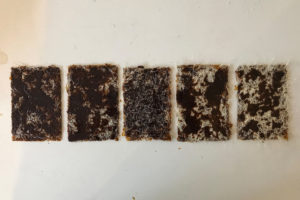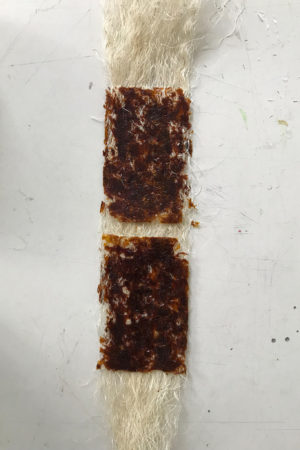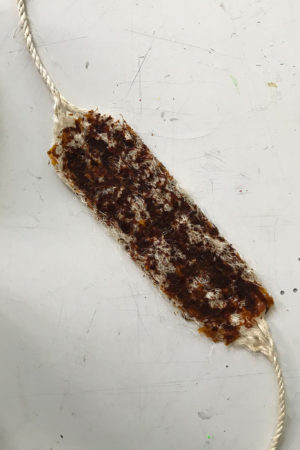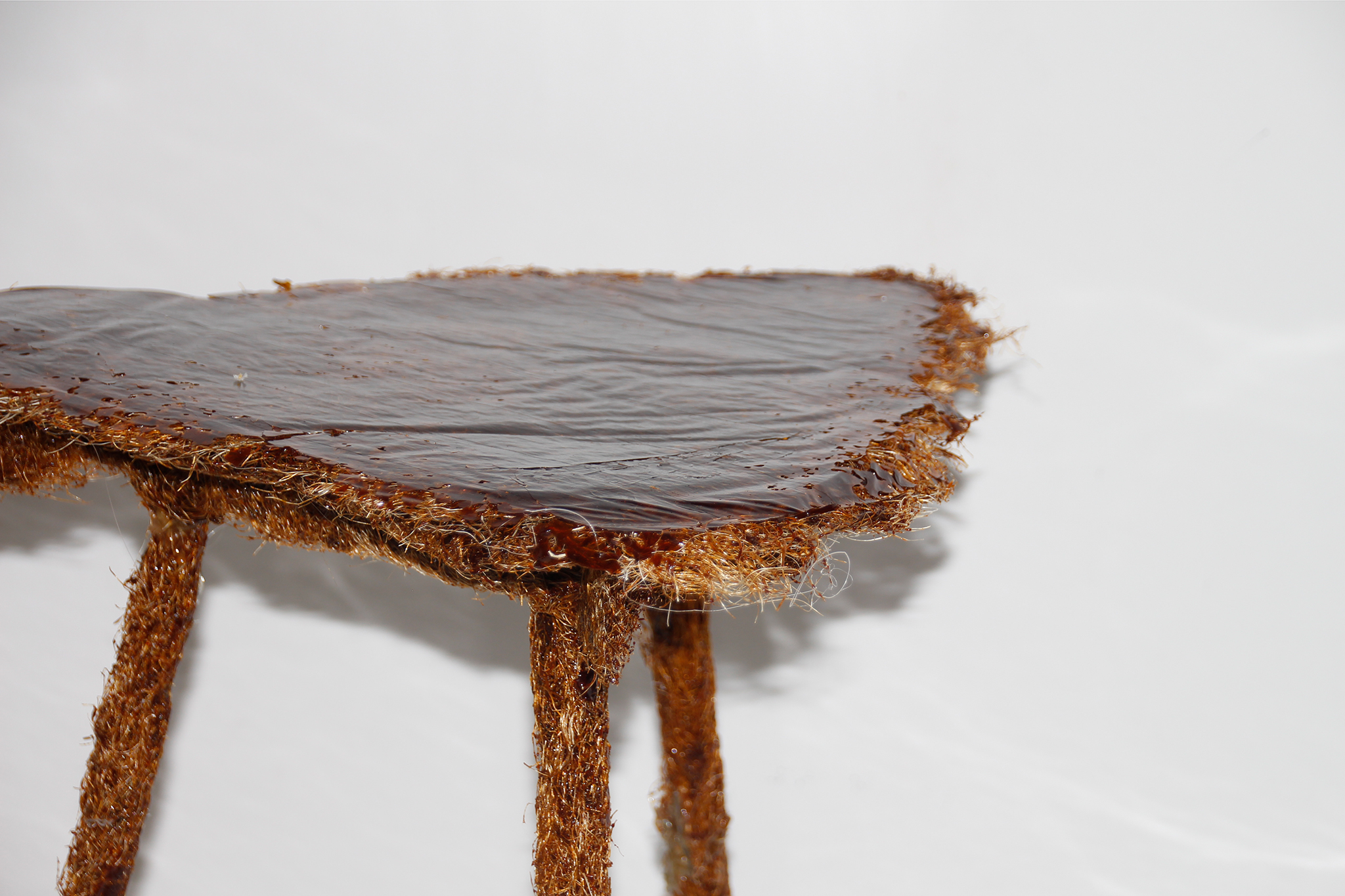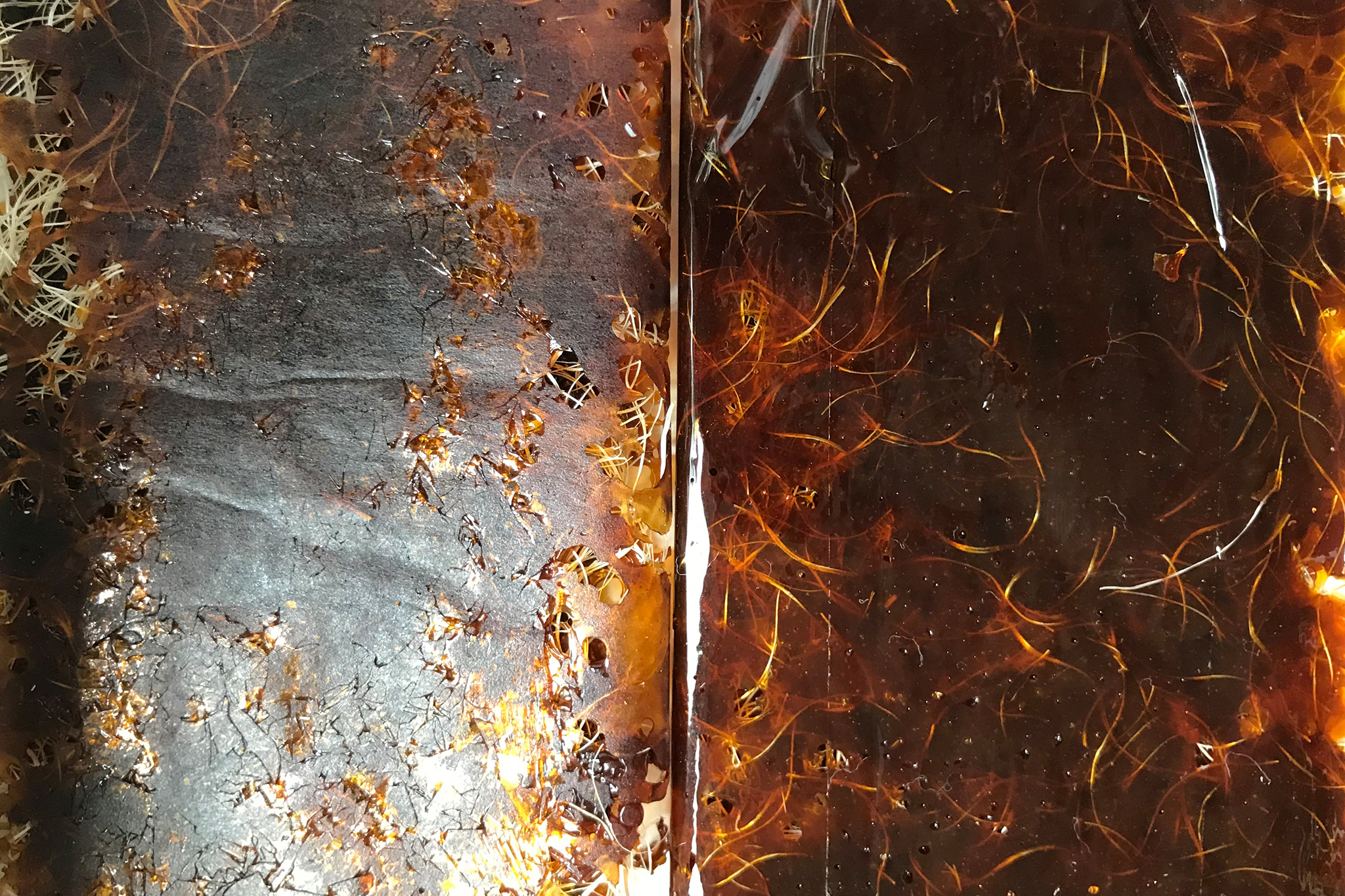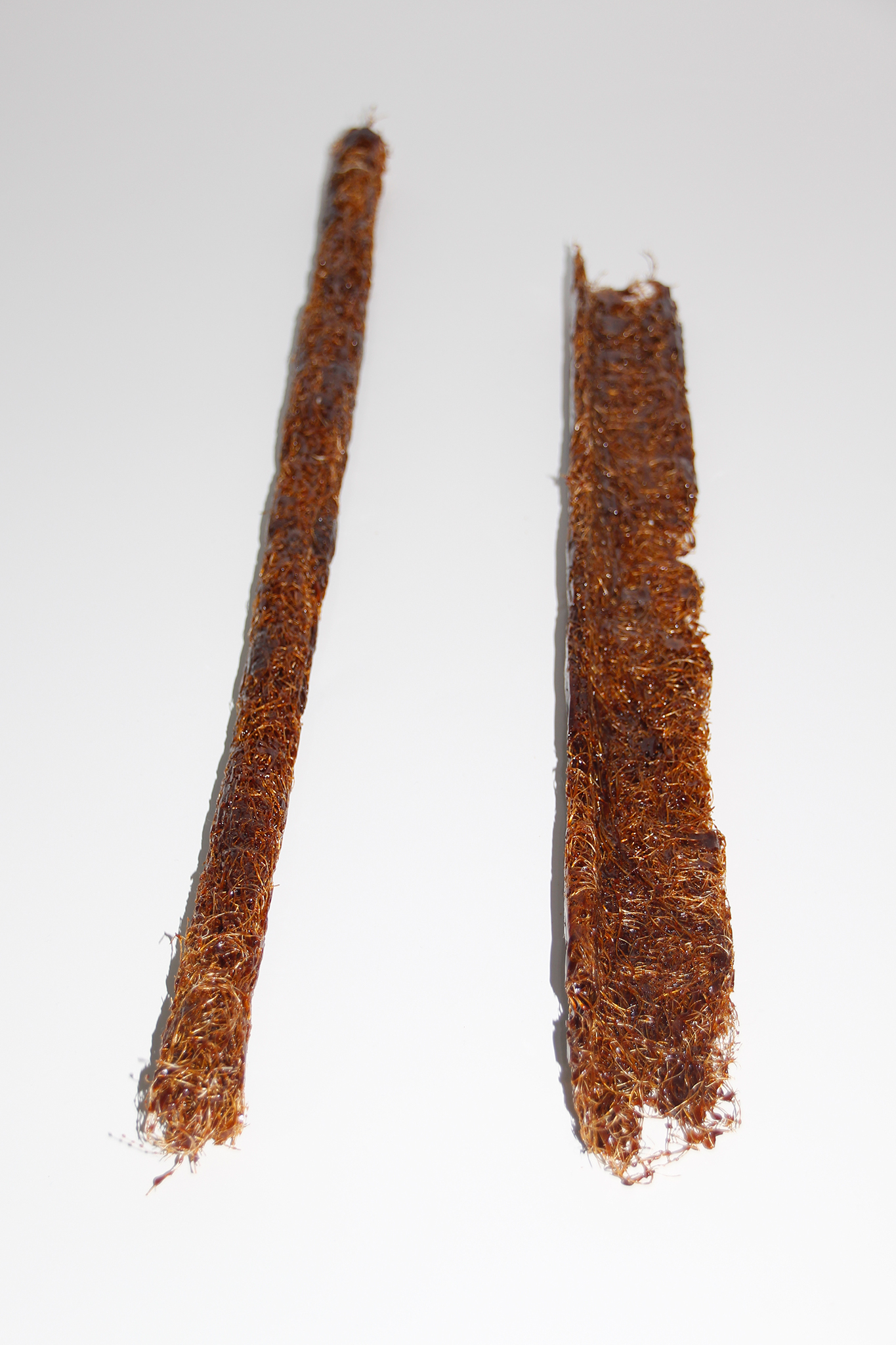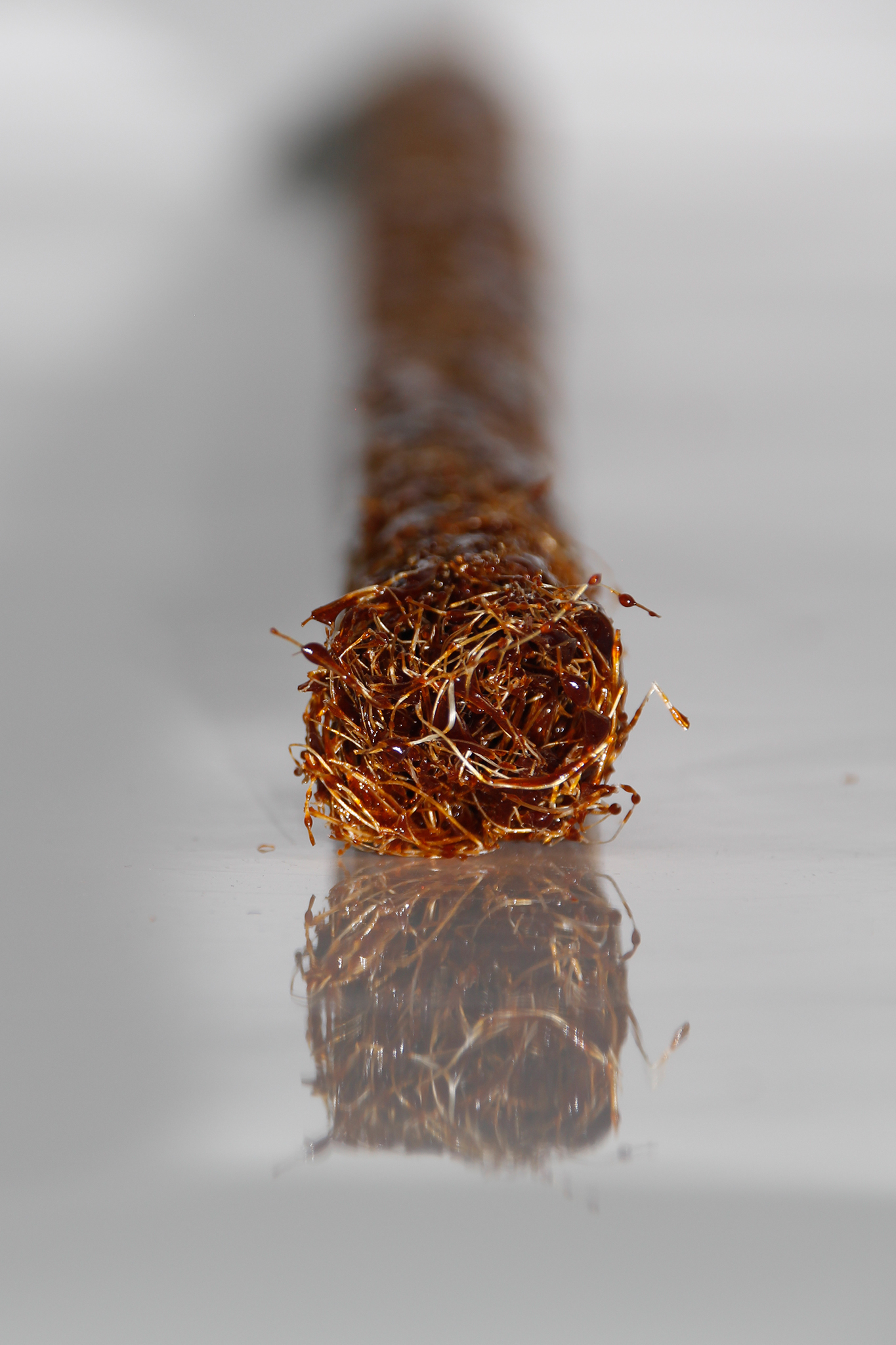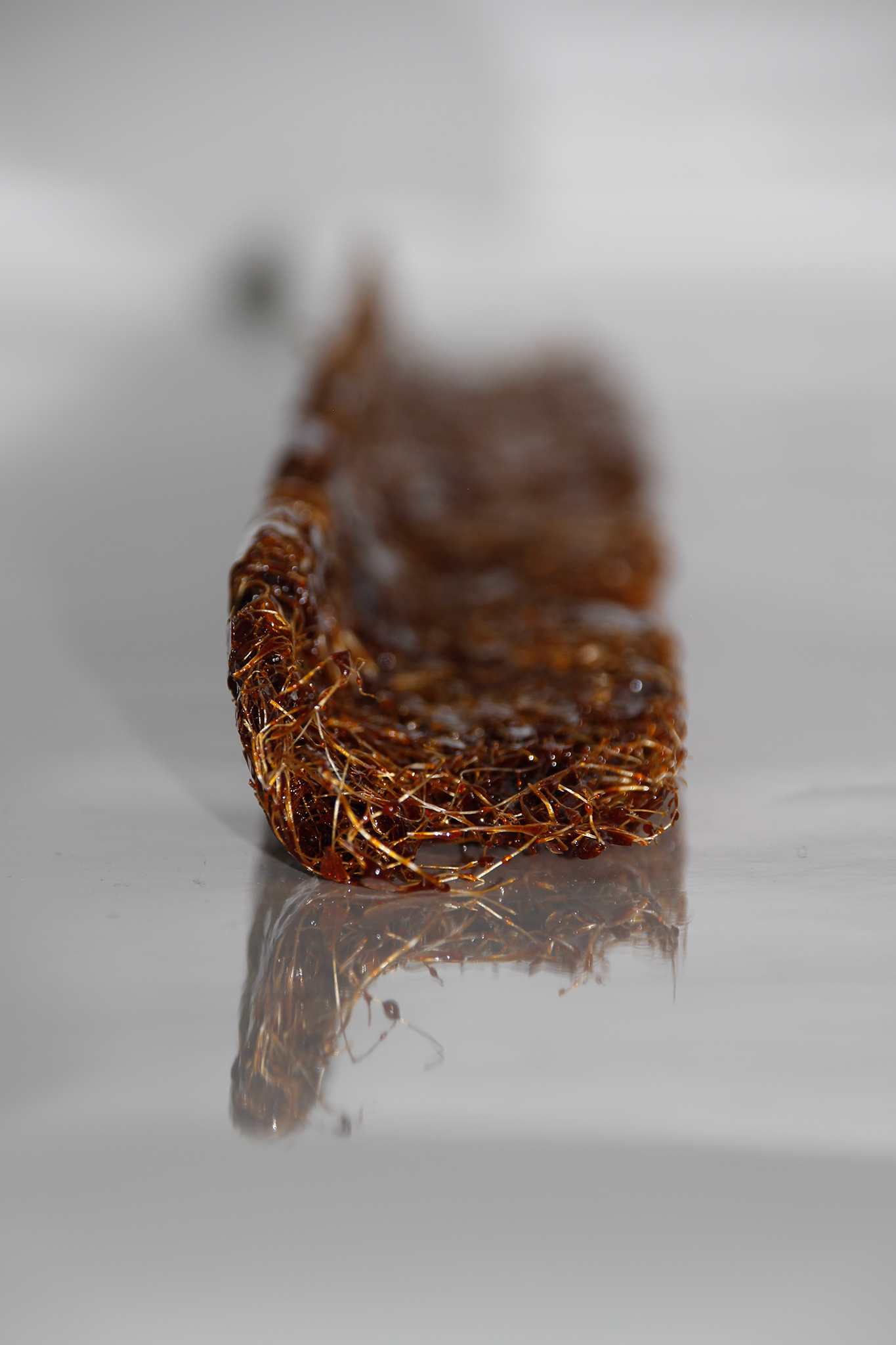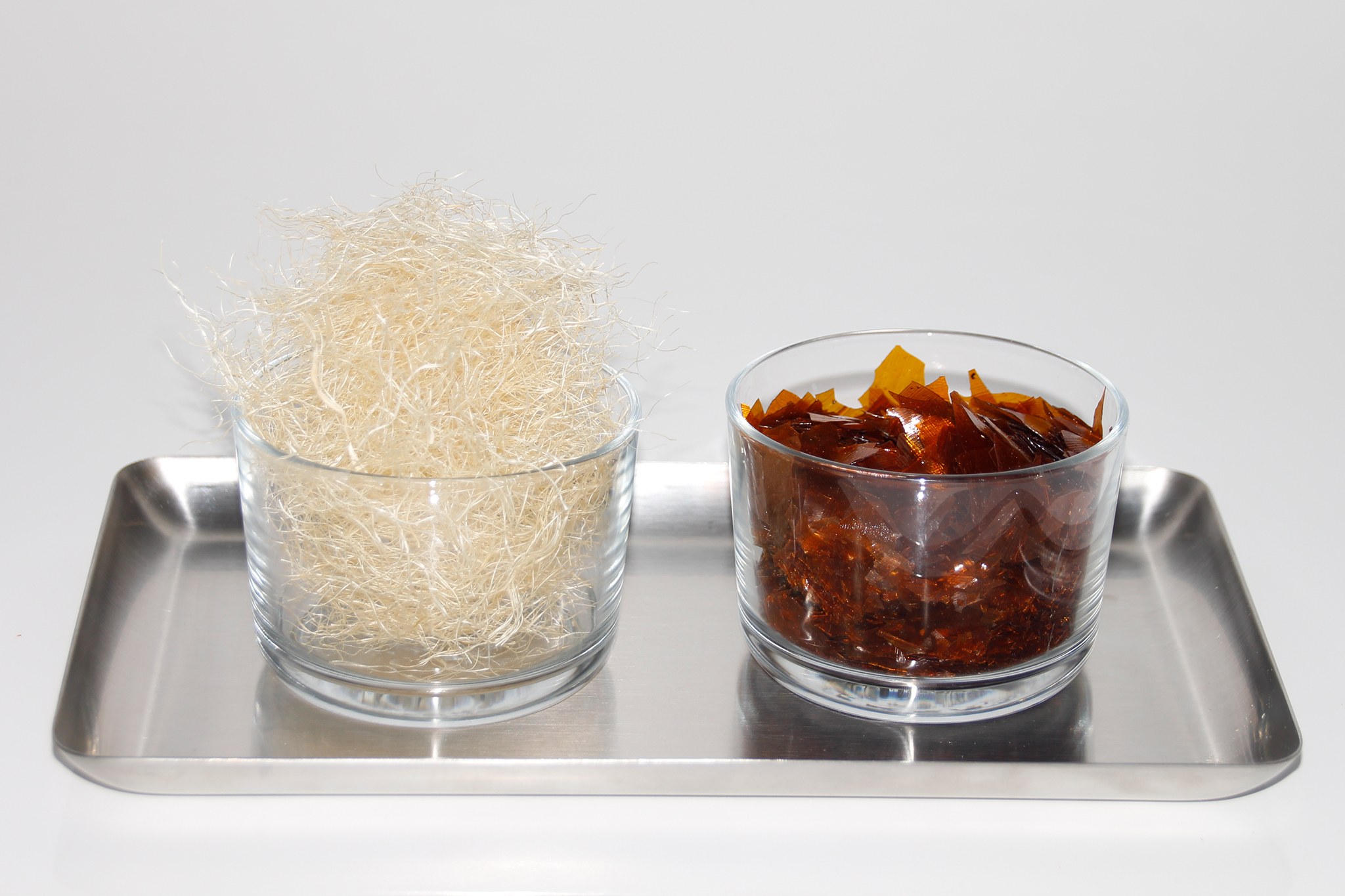Si E904
Si E904 ist ein Verbundstoff aus Sisalfasern mit Schellack als Bindemittel. Schellack, den man sonst nur als hauchdünnen Lack kennt, wird hier im Übermaß eingesetzt und erzeugt in Kombination mit den Sisalfasern einen überaus robusten und formstabilen Werkstoff. Schellack ist eine harzige Substanz und die Ausscheidung von einer Lackschildlaus (Kerria Lacca). Für 1kg Lack werden die Ausscheidungen von ca. 300 000 Läusen benötigt. Im krassen Gegensatz dazu steht die Sisalfaser, die mit 428 000 t pro Jahr die am fünfthäufigsten benutzte Pflanzenfaser weltweit ist. Beide Materialien sind für sich genommen ziemlich spröde, werden sie jedoch unter Hitze und Druck miteinander verbunden bilden sie einen äußerst stabilen Verbundstoff.
Si E904 stellt die Fragen nach der Wertigkeit von den Materialien, die wir in unseren Produkten einsetzten, in welchem Verhältnis sie zu einander stehen und zeigt dabei auf, welche Möglichkeiten entstehen wenn man Materialien neu kombiniert und anders einsetzt, als dies traditionell getan wird. Des weiteren zeigt es die Potentiale, die natürliche (und mittlerweile etwas vergessene) Bindemittel haben können.
Si E904 is a composite of sisal fibers with shellac as a binder. Shellac, which is otherwise known only as a wafer-thin lacquer, is used here in excess and in combination with the sisal fibers produces an extremely robust and dimensionally stable material. Shellac is a resinous substance and the excretion of a scale insect (Kerria Lacca). For 1kg of shellac, the excretions of about 300 000 lice are needed. In sharp contrast is the sisal fiber, which is the fifth most used plant fiber in the world at 428,000 tons per year. Both materials are quite brittle in their own right but when combined under heat and pressure they form a very strong composite.
Si E904 raises questions about the value of the materials we use in our products, how they relate to each other, and highlights the opportunities that arise when materials are recombined and used differently than traditionally. Furthermore, it shows the potential that natural (and now somewhat forgotten) binders can have.
Prozess
